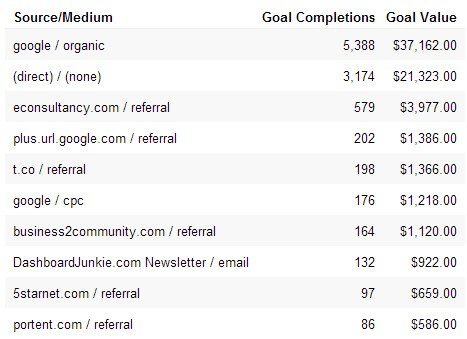The Delightfully Short Guide to Social Media ROI

Former VP of Marketing @ Buffer
If the concept of social media ROI feels rather enormous, you’re not alone.
I am amazed—and sometimes astounded—at the breadth of the topic.
So that’s made the exercise of writing a “delightfully short” guide to social media ROI all the more fun and challenging. I’ve given myself under 1,000 words to provide an overview of social media ROI and how to apply it to your social media marketing efforts. I’d love to hear your feedback in the comments!
[Interested in listening to this post in podcast format? We invite you to check out Buffer’s very own podcast – The Science of Social Media!]
What Does Social Media ROI Look Like?
ROI has its roots in business finance. Businesses use ROI to calculate the dollars-and-cents return on a dollars-and-cents investment.
Social media ROI is what you get back from all the time, effort, and resources you commit to social. And it’s best calculated with dollar amounts.
Of course, there are no dollar signs dangling from retweets or likes. Twitter, Facebook, and others are no-cost marketing channels to join, potentially a zero-dollar investment (which makes any return exponentially fantastic, right!).
So in order to track ROI, the key elements would be:
- Identifying your monetary investment in social media
- Attaching a dollar amount to your social media goals.
Difficult? Possibly.
Possible? Definitely.
How to Measure Social Media ROI
ROI = (return – investment) / investment
This straightforward formula has just the two parts: Return and Investment. Here’s how to figure out each of the two values on social media.
How to Calculate Your Return
“Return” is one of the trickier elements of social media ROI because it can mean so many different things to so many different marketers. For instance, we stopped calculating direct social media ROI at the Buffer blog when our conversion goals changed.
So first things first: What do you want to achieve?
What is your overarching goal with social media? And how can you specify the right actions that meet this goal?
Then, how much are these actions worth to you?
Step one: Choose a goal
There’s a whole host of possibilities for choosing which goals and actions to track. Troels Kjems at Think Digital shared a great list. Here’s a bit from Troels’s list and a few of our ideas, too.
- New followers
- Clicks on link in update
- Online purchases
- Filled out contact form
- Signups for newsletter
- Downloads of .PDF file
- Time spent on important webpage
Step two: Track your goal
Choose one or more of the above conversion goals, and start tracking. You can track website actions (sales, downloads, signups) in Google Analytics by setting up goals. You can track social media interactions (shares, likes, follows) in Buffer.
Step three: Assign a monetary value
Once you’ve chosen a goal and tracked the actions, it’s time to tackle the dollars-and-cents side of ROI. There are several different methods to choose from here:
- Lifetime value – How much do you earn on average from a customer? (There’s a helpful article here.)
- Lifetime value, multiplied by conversion rate – How much is each potential visit worth to you?
- Average sale – How much is the average purchase through your site?
- PPC costs – How much would you end up paying if you were to use ads to achieve the same social media actions?
Here’s an example chart from Think Digital about what these values might look like in a report:

The PPC costs seem particularly interesting to me. Basically, you compare the amount you would pay in advertising for a new follower, click, impression, etc. and extrapolate for what you actually earn via your organic (i.e., not paid) social media sharing.
If it costs $0.50 to gain a single new fan to your Facebook page, then your organic gain of 50 fans is potentially worth $25.
Through experimentation and research with the Buffer accounts we found some benchmarks that might be helpful for comparison. (You can run a 5-day campaign with social ads to get a baseline specific to you.)
- Facebook like average – $0.50 per page like
- Facebook reach average – $0.59 per thousand impressions
- Facebook click average – $0.50 per click
- Promoted tweet – $3.50 per thousand impressions
- LinkedIn – $2.00 per click
How to Calculate Your Investment
While it’s true that participation on Twitter, Facebook, and the like is free, your time is not. Your social media tools may not be. And your ad spend is worth real dollars.
- Your time – Multiply labor-cost per hour by the number of hours you’ve committed over a given period (depending on whether you’re measuring social media ROI for the week, the month, per campaign, etc.). Salary.com found the median hourly rate for social media managers to be $51. You can also look up salary levels for social media managers in your are using Glassdoor.
- Your social media tools – Add up the costs of all the tools and services you use for social media. Find the weekly or monthly costs using a bit of math (divide annual fees by 52 for the weekly cost, by 12 for the monthly cost).
- Advertising spend – The amount you spend on social media advertising—boosting Facebook posts, promoting tweets, etc.
All these costs added together will equal your investment.
A quick example
Big thanks to Neil Patel and Quick Sprout for putting together this infographic on measuring social media ROI. There’s a specific example in the graphic for how ROI might look for a fictional business.
Courtesy of: Quick Sprout
Additional reading
- How to Calculate the ROI of Your Social Media Campaigns – Quick Sprout
- How to Measure Online ROI in 6 Simple Steps – Think Digital
- How to Measure Social Media ROI – Social Media Examiner
- 10 Questions to Ask When Measuring Social Media ROI – Entrepreneur
- Social Media ROI Calculator – Dragon Search
- How to Measure Social Media ROI – Wikihow
Summary
Hopefully this helps show that measuring social media ROI is doable, with a bit of critical thinking and planning. I love the conclusion that Convince & Convert comes to:
Figure out what you want to track, where you can track it, think about both current customers and new customers, and go do it.
What questions do you have about social media ROI? Which methods do you use to track things? I’d love to hear your thoughts in the comments.
Image sources: Pablo, Death to the Stock Photo, IconFinder
Try Buffer for free
180,000+ creators, small businesses, and marketers use Buffer to grow their audiences every month.
Related Articles
Here are the top 12 courses to improve your social media marketing skills.

A step-by-step guide to scheduling your posts to Bluesky, cross-posting to other platforms like X or Mastodon, and even creating threads.

In this article, I’ll share why you must tailor your social content to each network and give actionable advice for each platform.
